- Karen Peterson
- Founder and CEO
- Common Measures
- National Girls Collaborative, University of Washington, Afterschool Alliance
- Ari Hock
- Research Assistant
- Common Measures
- University of Washington
Common Measures
NSF Awards: 1811487
The most recent synthesis of research on learning confirms that learning is a complex cultural process that occurs across both time and setting (NASEM, 2018). The time spent outside of the school classroom – more than 80% of a school-aged person’s waking hours – has been shown to be pivotal in developing interests, identities, and capacities to engage with ideas and subject matter they may also encounter in school, including STEM (Banks, 2006; National Research Council, 2006; OSTP, 2018).
Indeed, scores of studies have demonstrated the importance of family members, role models, and out-of-school time experiences for developing young people’s awareness and commitment to pursuing particular STEM learning pathways (Bell et al., 2015; Falk et al., 2017; Halim et al., 2018; National Research Council, 2009, 2015). Out-of-school time (OST) experiences may include structured afterschool, weekend, and summer time programs; visits to designed informal learning environments such as nature centers, museums, and libraries; as well as everyday experiences, conversations, and observations that make up much of a young person’s daily life. Altogether, these out-of-school time STEM experiences have been documented to produce learning outcomes such as:
- Dispositions related to choosing to do STEM (e.g., attitudes, interest, curiosity, motivation, identity, and self-efficacy);
- Disciplinary capacity to productively engage in STEM (e.g., understanding the nature of STEM fields, skills, and concepts);
- Social capital in STEM (e.g., role models, mentors, and peer networks); and
- Commitment to and pursuit of STEM learning pathways (e.g., career awareness, STEM course and program selection)
This video is focused on two lines of argument in the literature that pertain to the value and potential of student learning outcomes as they relate to OST STEM program quality. The first focuses on issues of equity in STEM learning and the second pertains to ecological perspectives on STEM learning.
Common Measures
NSF Awards: 1811487
The most recent synthesis of research on learning confirms that learning is a complex cultural process that occurs across both time and setting (NASEM, 2018). The time spent outside of the school classroom – more than 80% of a school-aged person’s waking hours – has been shown to be pivotal in developing interests, identities, and capacities to engage with ideas and subject matter they may also encounter in school, including STEM (Banks, 2006; National Research Council, 2006; OSTP, 2018).
Indeed, scores of studies have demonstrated the importance of family members, role models, and out-of-school time experiences for developing young people’s awareness and commitment to pursuing particular STEM learning pathways (Bell et al., 2015; Falk et al., 2017; Halim et al., 2018; National Research Council, 2009, 2015). Out-of-school time (OST) experiences may include structured afterschool, weekend, and summer time programs; visits to designed informal learning environments such as nature centers, museums, and libraries; as well as everyday experiences, conversations, and observations that make up much of a young person’s daily life. Altogether, these out-of-school time STEM experiences have been documented to produce learning outcomes such as:
- Dispositions related to choosing to do STEM (e.g., attitudes, interest, curiosity, motivation, identity, and self-efficacy);
- Disciplinary capacity to productively engage in STEM (e.g., understanding the nature of STEM fields, skills, and concepts);
- Social capital in STEM (e.g., role models, mentors, and peer networks); and
- Commitment to and pursuit of STEM learning pathways (e.g., career awareness, STEM course and program selection)
This video is focused on two lines of argument in the literature that pertain to the value and potential of student learning outcomes as they relate to OST STEM program quality. The first focuses on issues of equity in STEM learning and the second pertains to ecological perspectives on STEM learning.
-
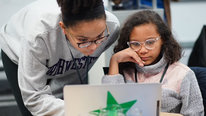 Sustaining a STEM Learning Ecosystem During a Pandemic
Sustaining a STEM Learning Ecosystem During a Pandemic
Denise Nacu
-
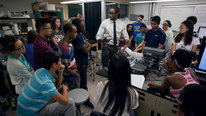 Staying in Science: STEM Pathways through Mentored Research
Staying in Science: STEM Pathways through Mentored Research
Rachel Chaffee
-
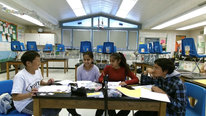 Understanding Group Interactions in STEM
Understanding Group Interactions in STEM
Nonye Alozie
-
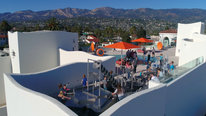 Informal STEM Facilitator Training Program
Informal STEM Facilitator Training Program
Ron Skinner
-
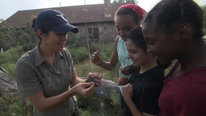 The SciGirls Strategies: How to Engage Girls in STEM
The SciGirls Strategies: How to Engage Girls in STEM
Rita Karl
-
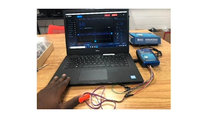 Experiment-centric Pedagogy in STEM During COVID-19 Pandemic
Experiment-centric Pedagogy in STEM During COVID-19 Pandemic
Oludare Owolabi
2041 Views
Continue the discussion of this presentation on the Multiplex. Go to Multiplex
2041 Views
presentation
has been viewed
Related videos you might be interested in...
-
 Sustaining a STEM Learning Ecosystem During a Pandemic
Sustaining a STEM Learning Ecosystem During a Pandemic
Denise Nacu
-
 Staying in Science: STEM Pathways through Mentored Research
Staying in Science: STEM Pathways through Mentored Research
Rachel Chaffee
-
 Understanding Group Interactions in STEM
Understanding Group Interactions in STEM
Nonye Alozie
-
 Informal STEM Facilitator Training Program
Informal STEM Facilitator Training Program
Ron Skinner
-
 The SciGirls Strategies: How to Engage Girls in STEM
The SciGirls Strategies: How to Engage Girls in STEM
Rita Karl
-
 Experiment-centric Pedagogy in STEM During COVID-19 Pandemic
Experiment-centric Pedagogy in STEM During COVID-19 Pandemic
Oludare Owolabi


Ari Hock
Research Assistant
Thanks for watching our video! This project is convening practitioners, policymakers, researchers, and funders who are interested in out-of-school time (OST) STEM learning. Together, we're considering how to center local community values in program evaluation. Read our CAISE blog post to learn more.
Here are a few questions we're interested in exploring:
Folashade Solomon
Senior Researcher
It's great to see opportunities for practitioners and researchers to get together to create meaningful partnerships. The video shows an example of an authentic relationship that can develop when diverse constituents are asked to come together around a common purpose. I wonder how your video participants would answer the questions you put out in your welcome message?
Karen Peterson
Ari Hock
Research Assistant
Folashade, I appreciate your comment. I too wonder how they would answer these questions. I know BioBus has been engaging the young people they work with on programming and evaluation. You can get a glimpse of their work in this excellent NYT article: https://www.nytimes.com/2021/01/21/health/coron...
And I believe the new project that Jasmine & Latasha are working on involves evaluating learning across settings, foregrounding spatiality in their analysis. But yes, I would love to hear more from them because there's just so much we can learn!
Jamie Bell
Project Director
Thank you for your innovative approach to this presentation! It's wonderful to see an authentic, generative connection that the event catalyzed. I'm also curious about where you all are now with regard to the questions that framed the convening and whether you have advice for others who may be planning to bring together researchers and practitioner to "go deep" on exploring the inherent tensions and unexplored possibilities?
Karen Peterson
Founder and CEO
We appreciate your comments Jamie! As we wrap up this small convening grant, we are collecting collaboration and partnership stories from participants to assist us in designing our next steps. For our convening, we were intentional about creating individual spaces for each group (practitioners first), and then engineering an agenda with both groups that honored perspectives and experiences from all. We were especially mindful to create a process that communicated the needs of practitioners to the researchers, so our "research to practice" and "feedback loop" goals could be realized.
Jamie Bell
Project Director
Thanks Karen! I hope you won't mind that I share the convening's InformalScience.org project page, as the survey findings helped me see the progress you all made in bringing these communities together and advancing the conversation on this topic. And please do let us know how we can continue to help disseminate your partnership stories.
Shane Woods
Senior Director, STEM Center of Excellence
Making time for conversations like this is needed and I am grateful that you made this a priority. Are any of the participants a part of a local STEM ecosystem? https://stemecosystems.org
Ari Hock
Research Assistant
Shane, thanks for watching the video and mentioning STEM Learning Ecosystems. Ron Ottinger from STEM Next comes to mind, and I believe there have been other participants involved in both, as well. It's so important to cultivate these spaces for designing and connecting STEM learning opportunities!